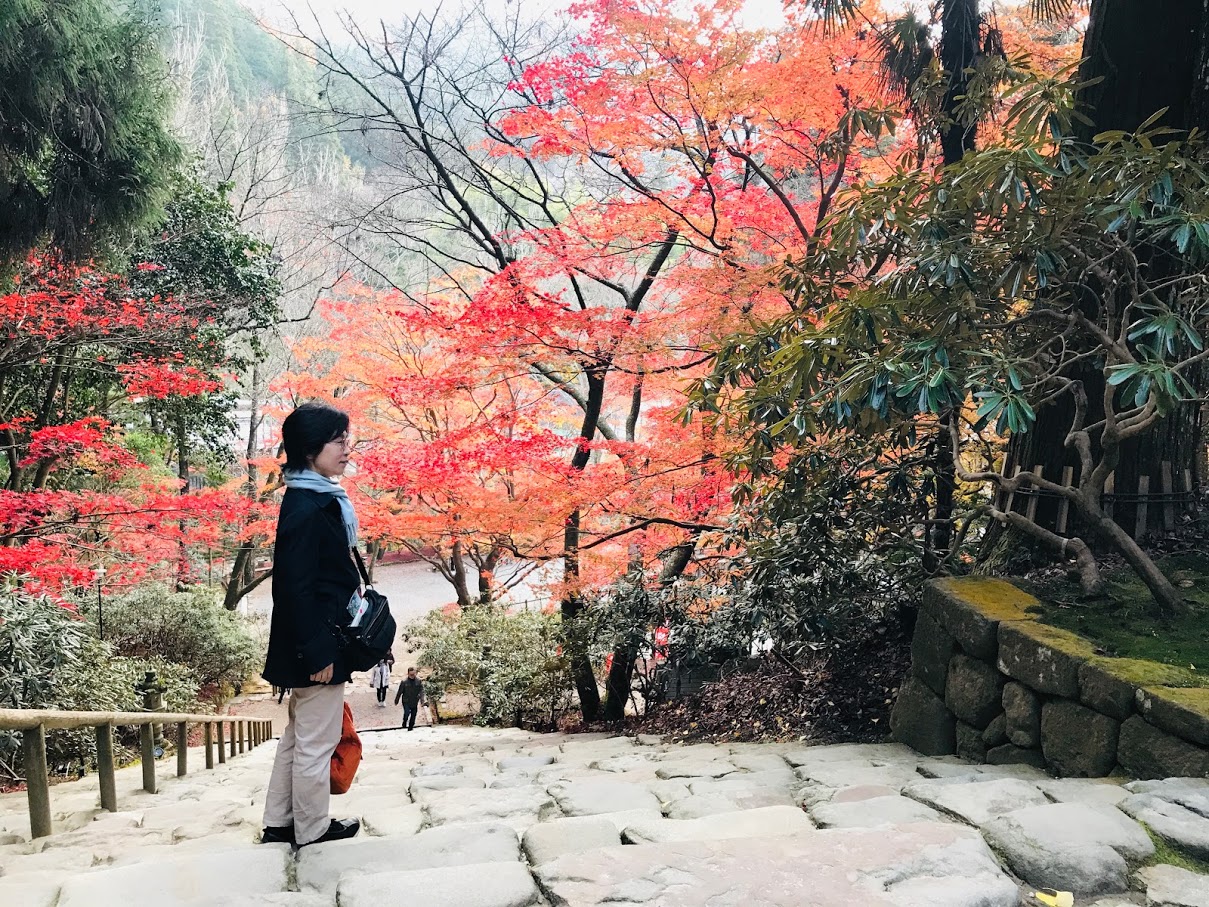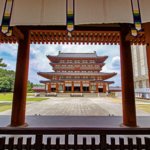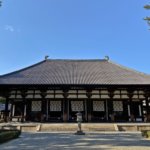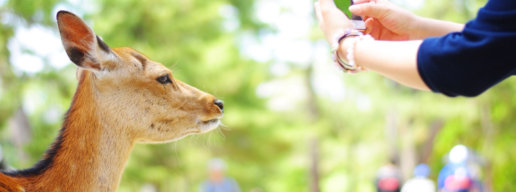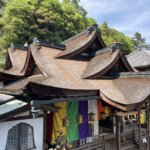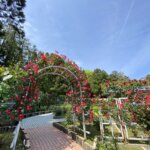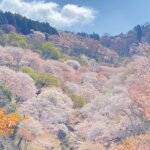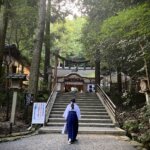Asuka is loved as a home of Japanese spirit.
About 1400 years ago, Japan was born as a nation with its capital in Asuka.
Today people come to Asuka to be healed by the most iconic scenery typical of Japan and feel a sense of romance strolling around the village full of mysterious ancient ruins. Manyosyu, the earliest existing anthology of Tanka poems mostly written in Asuka period is still widely read by Japanese people. The ancient people’s – rich and poor, men and women- broad-minded, easy going and friendly feelings and peaceful sceneries in Asuka read in those poems are deep in Japanese people’s memory. A day in Asuka is like time traveling back 1400 years.
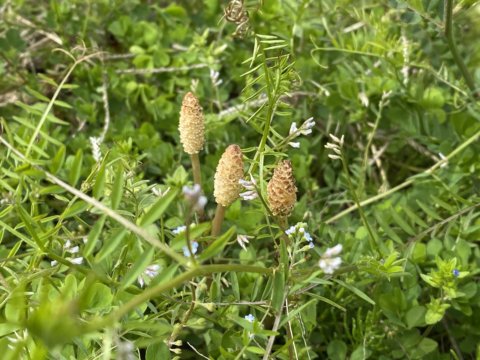
The horsetail is a sign of spring.
Tortoise Stone(Kameishi)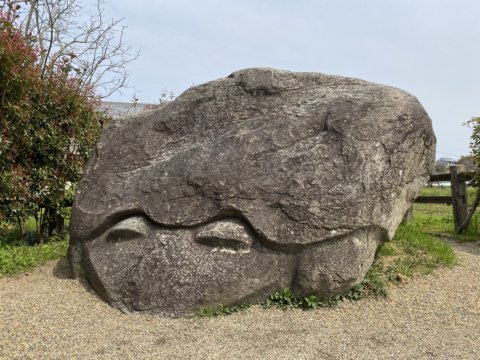
Tortoise Stone (Kameishi) is one of the mysterious stone structures in Asuka. It looks like a tortoise, but it is unknown why it was made.
Tachibanadera Temple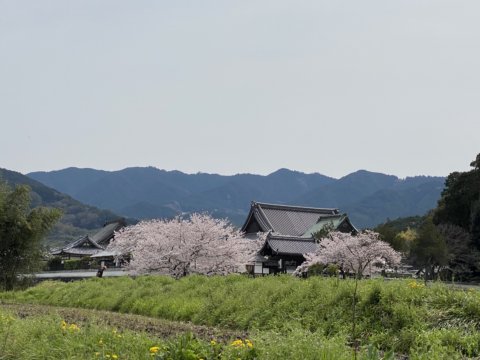
This is believed to be the birthplace of Prince Shotoku, a famous public official of the Asuka period. The double-faced stone, sitting in the garden of the temple, with each face representing good and evil should not be missed.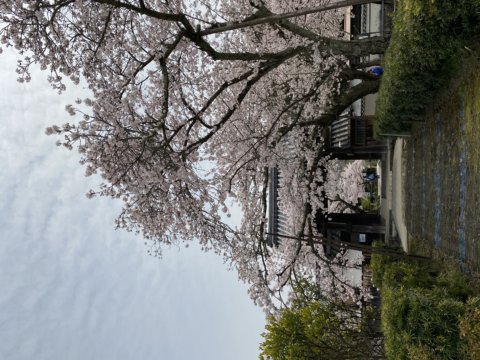
Tachibanadera Temple gate with cherry blossoms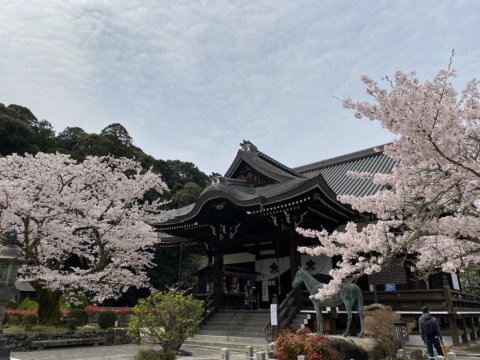
main hall with cherry blossoms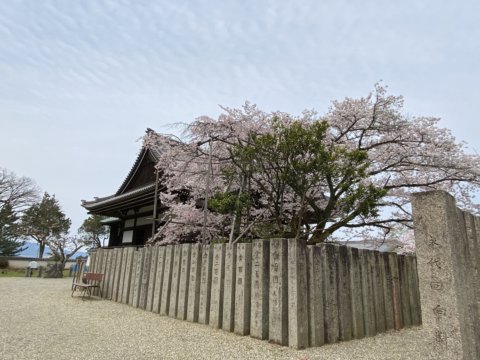
stone pillars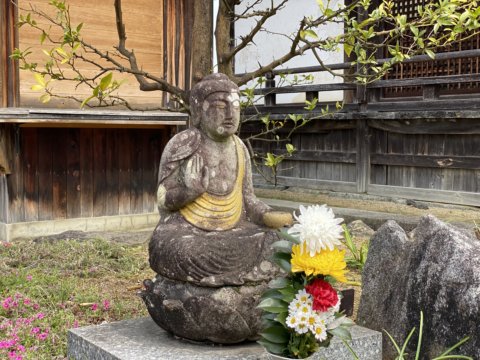
stone buddha 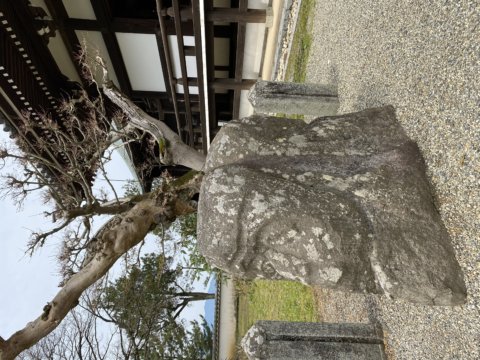
double-faced stone
Ishibutai Tomb
Stone chamber with cherry blossoms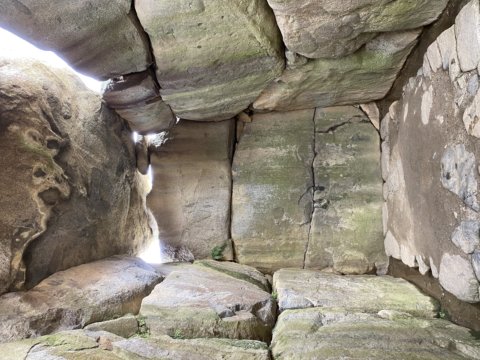
inside of the stone chamber
Among many mysterious stone monuments in Asuka, this is the largest and the most impressive. It is believed to have been made in early 7th century as a tomb for a powerful leader of the Soga clan who worked closely with Prince Shotoku to promote Buddhism which was brought from China. The large stone chamber was a part of huge burial mound, but the earthen mound was somehow lost in ancient times. You can walk into the chamber and look at the massive rocks from the inside. The weight of the two roof stones are about 64 and 77 tons respectively, and the total of more than 30 stones used for the chamber is about 2,300 tons. In spring, cherry blossom around the tumulus is gorgeous.
There are large open fields around and it is good for a picnic. Some shops and restaurants offer simple local food for lunch.
Okadera Temple
Nyoirin Kannon, the largest clay image in Japan, is the main statue of worship. The temple has a history of more than 1,300 years and is the first temple showing the power of expelling the evil spirits. The temple is also known by its rhododendron flowers in spring and beautiful colored leaves in autumn.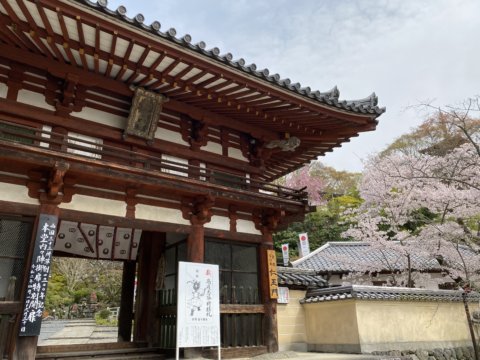
main gate
wash basin

main hall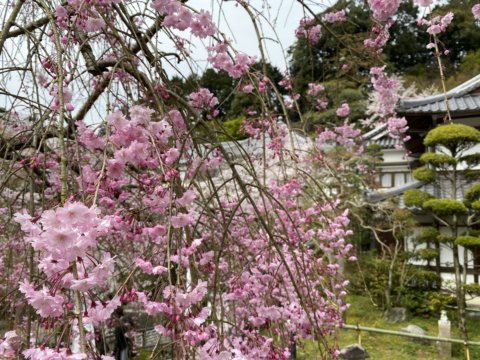
weeping cherry tree
Asukadera Temple
This is the oldest full-scale temple in Japan, made in 596. During the period, there was much influence from the Asian mainland and Buddhism was introduced to the country via the Korean peninsula. Asuka Daibutsu(Asuka Great Buddha), made in 609, is the oldest Buddhist statue in Japan. The bronze stature of about three meters tall originally had 30 kg of gold on the body, but the stature was very much damaged in large fires and had to be repeatedly repaired. It still has an archaic smile on its lips and almond-shaped eyes, which are typical in the Buddhist statues of Northern Chinese Wei. The statue was originally made by the famous sculptor Kuratsukuri No Tori. Photography is allowed.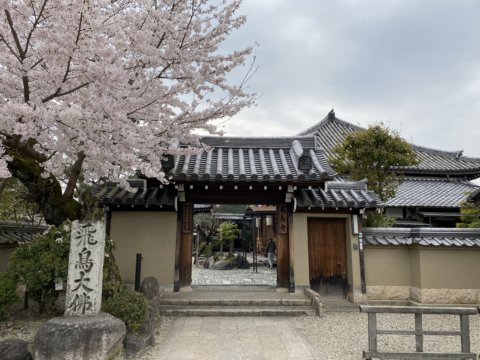
main gate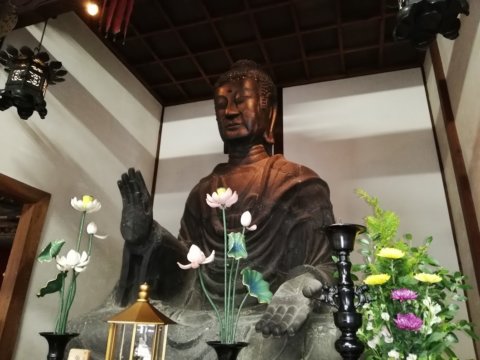
Asuka Daibutsu
Amakashi-no-Oka Hill
This low hill of about 148 meters in hight, is said to be where the powerful Soga family had a mansion at the beginning of the 7th century. The beautiful landscape surrounding the village of Asuka can be enjoyed from the top. Also a panoramic view of the mountains surrounding the Nara Plain can be seen in the distance. It is open free of charge all through the year.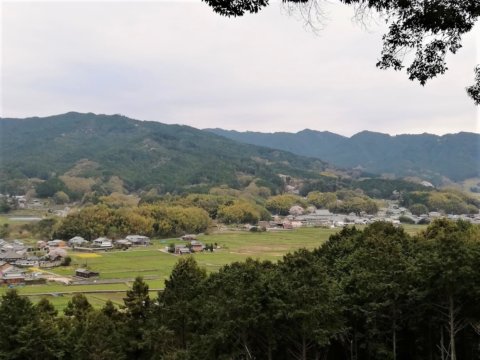
view from the top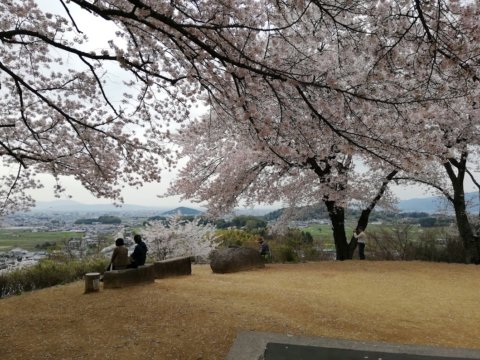
Takamatsuzuka Tumulus Area
The latest major discovery that attracted public attention in Asuka is Takamatsuzuka Tumulus, where in 1972 beautifully colored series of murals made in 7-8th century were found. The trigger of this sensational discovery was a local farmer who dug a hole to store his ginger. Takamatsuzuka Tumulus Area is just seven minutes on foot from Kintetsu Asuka Station. Asuka Historical National Government Park Hall in the area serves as the gateway to Asuka by introducing visitors to the area’s historic sites and facilities. In Takamatsuzuka Mural Museum, you can view a reproduction of the tomb’s murals.
Leaflet of the museum showing some colored murals: http://www.asukabito.or.jp/pdf/pamphlet_eng_201904.pdf
In Asuka, there are three national parks covering major tourist spots. Tourist information desks are available in each park office. Asuka is considered a unique National Treasure and the whole Asuka village is covered by Asuka Preservation law by the Japanese national government.
There are many Rent-a-Cycle services, including some battery powered bicycles.
The Aka Kame bus service runs around the area and the frequency of service is every half or one hour depending on the season. Please pick up the bus timetable at the station and then you can combine walking and bus riding. All sites mentioned here can be visited in a day by combining walking and bus riding.
Information:
Hours & Admission:
・Tachibanadera Temple 9:00-17:00(Enter before 16:30 No closing day Adult 350 yen
・Ishibutai Tomb 8:30-17:00(Enter before 16:45) No closing day Adult 300 yen
・Okadera Temple 8:00-17:00(Mar-Nov) 8:00-16:30(Dec-Feb) No closing day Adult 400 yen
・Asukadera Temple 9:00-17:30(Apr-Sep Enter before 17:15) 9:00-17:00(Oct-Mar Enter before 16:45) closed Apr 7 – 9 Adult 350 yen
・Amakashi-no-oka free admission
・Takamatsuzuka Mural Hall 9:00-17:00(Enter before 16:30) closed Dec 29-Jan 03 Adult 300 yen
・Takamatsuduka National Historical Government Park Hall 9:30-17:00(Mar-Nov) 9:30-16:30(Dec-Feb) closed Dec 29 – Jan 03 free admission
Address:
・Tachibanadera Temple: 532 Tachibana, Asuka Village, Takaichi District, Nara Prefecture
・Ishibutai Tomb: 133 Shimasho, Asuka Village, Takaichi District, Nara Prefecture
・Okadera Temple: 806 Oka, Asuka Village, Takaichi District, Nara Prefecture
・Asukadera Temple: 682 Asuka, Asuka Village, Takaichi District, Nara Prefecture
・Amakashi-no-Oka: 788 Toyoura, Asuka Village, Takaichi District, Nara Prefecture
・Takamatsuzuka Mural Hall: 439 Hirata, Asuka Village, Takaichi District, Nara Prefecture
* You are always asked to check information on the official website before you visit.
Official site:
・Asuka Histrical National Government Park https://www.asuka-park.go.jp/en/
including information about bus service
・Asuka Village https://asukamura.jp/english/index.html
・Okadera Temple https://www.nara-yamato.com/oka/en/
Access :
Recommended route:
* If you want to visit all of the places in a day before it gets dark, it is recommended to take the Aka Kame Bus for some portions, or a battery powered Rent-a-Cycle.
The Aka Kame Bus timetable and map (only in Japanese) : valid until March 31, 2021 https://asukamura.jp/kame_bus/pdf/timetable_aka_200918.pdf
Further information about the Aka Kame Bus and model routes, partly in English ASUKAMURA Official Website (ver.English)
* There are many other view spots, historical monuments and mysterious stones in this area, but the recommended route is good to cover major spots by walking and partly by bus in a day.
* Asuka Station is on the South-Osaka Line of Kintetsu Railway. It is about 40 minutes from Osaka-Abenobashi Station via Kashiharajingu-Mae Station.
photos taken in March 2020
last updated: Jan 10, 2021
Text by: Yoko 